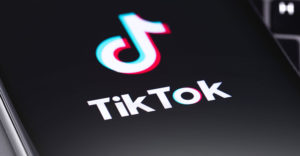The need to allure younger shoppers today is redefining marketing strategies for retailers who know that growing a youthful base of loyal customers is an essential process for long-term success. However, the digital road to converting younger shoppers to adopt a new brand or favorite merchandise depot is often marred with bumps and detours.
Some of the more effective marketing tactics that attract a younger shopping demographic involve mastering the hallways within social media outlets. That process draws on how to put influencers to work in drawing in new brand followers.
Targeting young individuals can create brand affiliation and build brand loyalty. To do this effectively, retailers must think beyond the immediate sale. That means learning how to track social trends as well as using an expanded toolkit of marketing and customer retention strategies. Knowing what works for your competitors cannot hurt, either.
Attracting and engaging with a younger target audience is no longer optional; it is an essential marketing goal. The big question is: how to do it?
Marketers and online retailers who have found useful answers to that question shared their insights with the E-Commerce Times.
Make Convenience Count
That slogan proved to be an effective approach for Ambition Digital, a digital marketing agency in Edinburgh, U.K. One of its clients is an e-commerce company in the clothing niche. The agency built the store’s website with a focus on offering a diverse range of payment options, explained Gatis Viskers, director at Ambition Digital.
“They got started during the lockdown in 2020, and that is when online shopping saw explosive growth. Our research found that above all, younger audiences favor convenience, flexibility, and the smoothness of online shopping over traditional high street-shopping experiences.
“So, one of the easiest and most profitable ways e-commerce retailers can achieve this is by offering a wide range of payment options — particularly buy now, pay later options,” he told the E-Commerce Times.
Ambition Digital connected the website to the Klarna payment solution. The retailer saw a 55 percent increase in sales within two months. Most of the sales using Klarna came from tech-native millennials and Gen Zers — the all-important 18-to-40 age demographic. That approach also resulted in less cart abandonment and higher average order values.
“This is why I see these types of buy now pay later payment solutions as one of the most important trends in e-commerce for 2022 and beyond, especially for online retailers looking to attract a younger audience,” Viskers said.
Part of that convenience factor can help create brand affiliation and build brand loyalty among a younger customer base, added Alex Williams, CFO at FindThisBest. The younger generation is very much focused on cost savings. He believes offering more value for less price is the best way to attract young consumers.
“One of the best ways to get the younger generation of Gen Z and Millennials to focus on retail products is to offer experiences rather than products. The newer generation is very much focused on festival culture, which retailers can take advantage of,” Williams told the E-Commerce Times.
Do this by taking the retail experience out of your brick-and-mortar store and arranging events to showcase your products, he explained. This way, young adults will be more inclined to pay attention to your products.
Focus on Social Media
Retailers who make effective use of social media platforms can effectively reach the young demographic, observed Aviad Faruz, CEO at Faruzo, a jewelry and accessories retailer. But before devising a social media strategy, the product’s intended purpose should be clearly stated. Also, your campaign should be designed around it.
“I would recommend the product packaging to be colorful, as to attract young audiences,” he told the E-Commerce Times.
Everything from news to entertainment is now available on social media devices. Having a presence on social media can completely change the outlook of your brand, Faruz added.
“Social media could also act as a potential marketplace for your brand and engagement on different platforms ensures increased revenue,” he said.
Gen Zers will soon comprise the largest cohort of consumers in the U.S., observed Kayla Marci, market analyst at Edited. Insider Intelligence projects the number of digital buyers in this age range to surpass 41 million by 2025.
“American Gen Zer’s favorite trends are rooted in nostalgia, with Y2K and 70s influences boosting the sell-outs of straight leg jeans, cut-outs, and psychedelic prints,” observed Marci.
“Off the back of the #BamaRush TikTok phenomenon, preppy and collegiate aesthetics resonate with consumers returning to campus. As the season changes, Pinterest searches for seasonal outfits are heating up, indicating demand from this consumer group,” she told the E-Commerce Times.
Tap Into Young Buyers’ Mindsets
To better attract a younger customer base, marketers must optimize their online channels to appeal to a younger audience. Millennial and Generation Z consumers are avid researchers. They spend a significant amount of time studying and evaluating brands before picking from whom to buy, suggested David Bitton, co-founder and CMO of DoorLoop.
“During the exploratory stage of the customer journey, they check the company’s social networks for reviews, recommendations, and comments posted by others who have used the product or service or interacted with the company,” he told the E-Commerce Times.
Maximizing your social channels by showcasing customer reviews and testimonials demonstrates your value to these younger customers. This boosts sales and revenue. Younger customers are also more inclined to post a review if they have a positive experience interacting with your company and using your product, noted Bitton.
“They’re also more likely to share their experiences on their social media profiles, increasing your brand’s share of voice through word-of-mouth,” he added.
Also, retailers should shape marketing efforts to reach these generations and truly construct marketing campaigns that will resonate with them. Do this by learning everything you can about them. Doing so allows you to obtain a deeper grasp of their generation and their various points of view, he explained.
“Millennial and Gen Z consumers lived during economic downturns, a pandemic, and a slew of other calamitous events that shaped their perspectives and the way they value money in comparison to older generations,” observed Bitton.
Having a finger on the pulse of social trends is more important than ever before to attract young consumers. When marketing to younger customers, keep in mind that their attention spans are likely to be relatively short. As a result, you should always be on top of trends and what is currently trending to keep them from becoming bored with you, he recommended.
“If you do not keep your social media material, website, and promotional strategies up to date with relevant content as trends change, your clients will go to your competitors, who constantly provide relevant marketing content,” warned Bitton.
Don’t Discount Influencer’s Role
It is important to keep up with social media trends to attract more young consumers. Younger consumers are way more reliant on social media than they were a few years ago, cautioned FindThisBest’s Williams.
“Social media platforms are not just there for connecting with family and friends but also to stay up to date with the latest happenings in the world. The rise of influencer culture has pushed consumers towards seeking advice and recommendations from social media. In such times, marketers need to be on top of every upcoming trend,” he said.
Influencer marketing is gaining traction in an age when people are tired of sales tactics. More than 40 percent of Millennials use ad blockers. Long before they make a purchase, consumers engage in online interactions with their peers. Brands must be a part of that conversation to be effective, said Williams.
Influencers can reach a specific audience while also creating trust if they are used wisely. This is significant since many consumers distrust advertisements and will not base their purchasing decisions on them.
However, paid influencers face increased pressure to reveal sponsorships. So consumer opinion toward sponsored influencer posts is more akin to advertisements than word-of-mouth validation, noted Williams.
“This shift in mood does not, however, imply that influencer marketing has lost its allure. When it comes to producing influencer activations, brands just need to be more inventive,” he said.




























































Social Media
See all Social Media